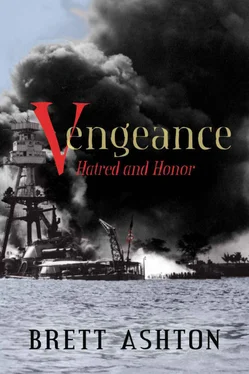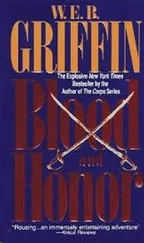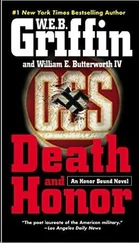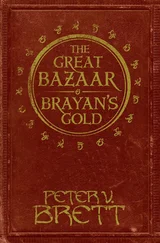A call went out over the ship’s communication systems for all stations to report that they were still ready for combat. The ship began to accelerate in the water, adding to the exaggerated motion you normally feel at the top of the tower in Sky Control as the ship hits the swells. We began to turn in closer to Enterprise . Our mission was to protect her.
Right on cue, the various stations under my command began reporting in. “Sky One, ready. Secondary Three, ready. Sky Four, ready.” My talker marked each one off on his check sheet as they all reported in. The machine gun officer reported, “All automatic weapons ready, sir.”
I took one last quick look around the deck to make sure we were ready. From my position in Sky Control, I could see most of the ship below me and could quickly assess the status of the various guns and directors. Everything was manned and ready, and a very large portion of the guns were beginning to turn toward the sky over Enterprise . It was assumed the carriers would be the primary target of the Jap attack.
For the first time since the sinking of the Oklahoma , I had the chance to fulfill the promise I had made to myself. I would never, during the course of the war, be caught unarmed again. I could still see in my mind the look on the faces of the aircrew of the Kate, which dropped the torpedo on the Oklahoma as it zoomed overhead, close enough that I could have shot it.
I unsnapped the holster that held my trusty new Colt forty-five (the old one was still on the Oklahoma ) and pulled it out and checked it. A round was in the chamber, and it was cocked with the safety on. “Cocked and locked,” as they say. I slid it back into the holster and nervously began tapping the handgrip as I waited.
About a minute later, my sound-powered phone cracked to life with the voice of the talker for the bridge: “All stations report.” The tone of his voice struck me as being rather tense. I gave the order to my talker to report all air defense readiness to the gunnery officer, who relayed the message to the bridge.
The Showboat was ready for a fight, and, hopefully, the crew was as well.
The carrier’s radar, for some reason, didn’t detect the Japs at the range we would have wanted, but there was still a fair cap operating above us. It didn’t take long for the Enterprise and Saratoga to get the rest of the planes into the air, but even still, there were only fifty-four Wildcats to meet the 160 Japanese coming in.
The battle lingered for a time in the air above us as the American pilots desperately tried to protect the fleet. This gave the rest of the fighters on the carriers a little extra time to get airborne. You could see planes dropping from the sky, trailing smoke in the distance as the battle developed. They were a little too far off to tell whose they were.
The radar operators in CIC began to give continuous updates on range and numbers of enemy aircraft. It looked for a short time like the battle was going toward the Saratoga , but then it turned back toward the Enterprise . It was only a short matter of time until the Japs would be able to break through the air defenses and begin to attack the ships. And it didn’t look like they would be breaking through in small numbers.
The target designator operators focused in on several aircraft which suddenly moved in closer at a very rapid pace. “Concentrate fire on the bombers; the fighters have second priority. Here they come,” I said to the crew, thinking it would be easier to survive a strafing attack than a bomb or torpedo.
At 2000 yards maximum, the twenty-millimeter guns didn’t have the kind of range I would have liked. I found myself wishing, not for the last time, for a longer range, higher caliber, automatic weapon. And the remaining one point ones and fifty-caliber guns were considered to be a last-ditch effort against the modern Jap planes we were facing. The only real long-distance weapons on board usable against aircraft were the ship’s twenty five-inch dual purpose guns, and we were going to use them as much as we could. So when we did finally decide to open fire, the five-inch guns would open first, then the automatic weapons as the Japs got closer.
Just about then, several puffs of flak smoke appeared above Enterprise from her own guns, along with the delayed sound of the explosions.
Several seconds later, the order came from the gunnery officer. “Commence firing!”
“Commence firing!” I repeated.
The reaction was almost immediate. Boom , the first gun fired. A few seconds later, boom, boom : several more opened up. Then, for the first time, I witnessed the whole port side of five-inch guns on the North Carolina erupt in continuous gunfire. The entire ship shook beneath me, as if the ocean itself was shaking from the violence of it. The noise was deafening. It was almost impossible to communicate with each other in Sky, let alone on the phones to the other stations of the ship. Most of the communication in Sky was given by hand signals. I would slap one of the target designator operators on the shoulder and point at the Jap plane I wanted him to shoot at.
The Japanese aircraft continued to press the attack closer, and it wasn’t long until we were surrounded. The starboard guns opened up, doubling the noise level. Thick black puffs of smoke filled the sky above us as the guns continued to fire.
Still, the Japs kept coming closer and started making actual runs on the Enterprise .
The Showboat ’s twenty-millimeter and one point one-inch guns lit up all at once, not adding so much to the volume of the noise but the intensity. Rather than being able to hear individual gunfire, it was just an intense roar of total deafening noise. Giant cyclones of tracer rounds streamed forward from the guns of the ships around us, following the pattern of attack of the oncoming enemy.
Time after time, enemy planes kept being knocked down, but for how long? How long could they press the attack? How long could we defend against a determined onslaught of this magnitude?
I didn’t have to wait long for my answer. One broke through and dropped a bomb aimed at the Enterprise . A puff of smoke and water billowed up next to the starboard side; it was a very near miss. We knew we weren’t the main target of the attack; the carriers were, but that didn’t slow our gunfire a bit. We were all in the same fleet, and it was our fate to live or die together. We needed them for air cover as much as they needed us for anti-aircraft fire support. Without one or the other, we would all be vulnerable.
And soon enough, my observations proved out. There were plenty enough Japs in the air to attack all of the larger ships in the formation. And they began to break through the fleet’s defenses more rapidly than I could count. Bombs began to rain down all around us; several of them splashing large amounts of water over the Showboat ’s main deck and several close enough that the blast knocked some of the crewmen off their feet. But we were very lucky to have a skilled navigator, who kept the ship turning to dodge the dive-bombers, and none of them struck us.
I became aware of a voice that I could barely hear on the sound powered phones: “ Sky, bridge; are we on fire? ” I looked down for the first time since the battle started. The entire superstructure was covered in thick smoke from the guns being blown aft by the winds over the deck. It was a little bit shocking. My attention until then had been toward the sky, and in Sky Control, we were well above the smoke. It took a couple of seconds to look around and see that there was no fire; it was just the guns. “ No we are not on fire, repeat, we are not on fire! ” I shouted back through my phones, turning my attention back skyward toward the real threat.
Читать дальше












